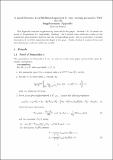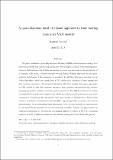Files in this item
A quasi-Bayesian local likelihood approach to time varying parameter VAR models
Item metadata
| dc.contributor.author | Petrova, Katerina | |
| dc.date.accessioned | 2021-04-12T23:47:15Z | |
| dc.date.available | 2021-04-12T23:47:15Z | |
| dc.date.issued | 2019-09 | |
| dc.identifier | 252974539 | |
| dc.identifier | 1b47ec41-f352-4631-ba76-b2e1140dbed8 | |
| dc.identifier | 85064614642 | |
| dc.identifier | 000484874800015 | |
| dc.identifier.citation | Petrova , K 2019 , ' A quasi-Bayesian local likelihood approach to time varying parameter VAR models ' , Journal of Econometrics , vol. 212 , no. 1 , pp. 286-306 . https://doi.org/10.1016/j.jeconom.2019.04.031 | en |
| dc.identifier.issn | 0304-4076 | |
| dc.identifier.other | RIS: urn:DF5B4AB6EF3A744C5C9E90AF84E32872 | |
| dc.identifier.other | RIS: urn:DF5B4AB6EF3A744C5C9E90AF84E32872 | |
| dc.identifier.other | ORCID: /0000-0002-3155-2938/work/57088526 | |
| dc.identifier.uri | https://hdl.handle.net/10023/23017 | |
| dc.description.abstract | The paper establishes a quasi-Bayesian local likelihood (QBLL) estimation methodology for a multivariate model with time varying parameters. The asymptotic validity of the resulting quasi-posterior distributions of the drifting parameters is proven in general and, in the special case of a Gaussian VAR model, a closed form time varying Normal-Wishart expression for the quasi-posterior distribution of the parameters is provided. In addition, this paper develops several Gibbs algorithms, which can sample from a VAR model with a mixture of time varying and time invariant parameters. The proposed estimators differ from existing state space approaches to VAR models in that they estimate parameter time variation nonparametrically, without imposing parametric stochastic processes on the parameters. The QBLL estimators are robust to misspecification of the state equation and exhibit good finite sample performance, even when compared to correctly specified parametric state space models, as illustrated by a Monte Carlo exercise. In addition, we demonstrate that the QBLL approach provides a remedy to the ‘curse of dimensionality’ by accommodating large dimensional VAR systems and delivers improvements in the out-of-sample forecasts of key macroeconomic variables. Finally, the paper makes an empirical contribution to the literature on changing inflation dynamics in the U.S., presenting evidence of a fall in inflation persistence and volatility during the Great Moderation period. | |
| dc.format.extent | 391557 | |
| dc.format.extent | 260990 | |
| dc.language.iso | eng | |
| dc.relation.ispartof | Journal of Econometrics | en |
| dc.subject | Time varying parameters | en |
| dc.subject | Changing volatility | en |
| dc.subject | Monetary policy | en |
| dc.subject | Bayesian methods | en |
| dc.subject | HB Economic Theory | en |
| dc.subject | HG Finance | en |
| dc.subject | T-NDAS | en |
| dc.subject | BDC | en |
| dc.subject | R2C | en |
| dc.subject.lcc | HB | en |
| dc.subject.lcc | HG | en |
| dc.title | A quasi-Bayesian local likelihood approach to time varying parameter VAR models | en |
| dc.type | Journal article | en |
| dc.contributor.institution | University of St Andrews. School of Economics and Finance | en |
| dc.identifier.doi | 10.1016/j.jeconom.2019.04.031 | |
| dc.description.status | Peer reviewed | en |
| dc.date.embargoedUntil | 2021-04-13 |
This item appears in the following Collection(s)
Items in the St Andrews Research Repository are protected by copyright, with all rights reserved, unless otherwise indicated.


